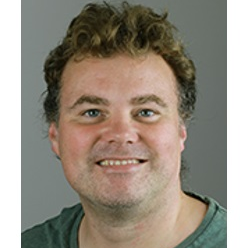Properties and Applications of Porous Materials
A special issue of Applied Sciences (ISSN 2076-3417). This special issue belongs to the section "Energy Science and Technology".
Deadline for manuscript submissions: closed (28 September 2022) | Viewed by 845
Special Issue Editor
Interests: porous materials; adsorption kinetics and thermodynamics; adsorption metrology; multicomponent gas adsorption; Metal Organic Frameworks (MOFs); hemilabile and switchable MOFs; activated carbons; carbon molecular sieves; zeolites; polymeric and ceramic hollow fibers for gas and vapor separation; electroceramics for gas sensing and separation
Special Issue Information
Dear Colleagues,
Porous materials are being used in new applications in a wide variety of scientific and engineering disciplines due to the ability to systematically modify, or control through synthesis, their porous structure and surface chemistry. This can result in materials with carefully tuned functional properties, and these advancements are currently at the frontier of materials science research. These functional properties include controlled gas diffusion characteristics, tunable electrical and thermal conductivities, and specific interactions with chemical species due to alterable surface functional groups. There is a heavy focus on developing new porous materials such as metal organic frameworks (MOFs), porous polymers, and aerogels; however, traditional materials such as activated carbons, zeolites, and mesoporous silicas are finding a new lease of life in energy storage research. The current trend in research activities is driven by discovering materials with high surface areas, lightweight properties, as well as tunable electrical and thermal conductivities. For instance, activated carbons and metal foams are gaining prominence in electronic and thermal materials research, particularly in the field of electromagnetic interference shielding, battery electrode fabrication, and thermal insulation. Activated carbon materials have also been extensively studied in super capacitor and electrode research, displaying exceptional performances due to the ability to control the micropore size distribution. Additionally, liquid phase adsorption on activated carbons with modified surface chemistry has recently been employed for virus and heavy metal removal from contaminated water bodies. However, new porous materials, such as MOFs, display specific host–guest interactions at the gas–liquid–solid interface, as well as framework flexibility, and these properties need to be understood in detail if highly selective materials are to be rationally engineered. This will allow major developments in the fields of gas separation, CO2 capture, VOC removal, catalysis, and drug delivery. In the world of civil engineering and fire control, materials such as aerogels exhibit superior sound absorption and heat insulation properties due to their extremely low density and low thermal conductivity. Metal foams have also been used in the construction industry for sound absorption in bridges and subways. Additionally, these foams also demonstrate excellent anti-aging characteristics, as well as heat and fire resistance. This Special Issue aims to provide a comprehensive overview of the current research on functional porous materials, which have the potential to overcome tomorrow's environmental, transport, energy, construction, and medical challenges.Dr. Jon Grahame Bell
Guest Editor
Manuscript Submission Information
Manuscripts should be submitted online at www.mdpi.com by registering and logging in to this website. Once you are registered, click here to go to the submission form. Manuscripts can be submitted until the deadline. All submissions that pass pre-check are peer-reviewed. Accepted papers will be published continuously in the journal (as soon as accepted) and will be listed together on the special issue website. Research articles, review articles as well as short communications are invited. For planned papers, a title and short abstract (about 100 words) can be sent to the Editorial Office for announcement on this website.
Submitted manuscripts should not have been published previously, nor be under consideration for publication elsewhere (except conference proceedings papers). All manuscripts are thoroughly refereed through a single-blind peer-review process. A guide for authors and other relevant information for submission of manuscripts is available on the Instructions for Authors page. Applied Sciences is an international peer-reviewed open access semimonthly journal published by MDPI.
Please visit the Instructions for Authors page before submitting a manuscript. The Article Processing Charge (APC) for publication in this open access journal is 2400 CHF (Swiss Francs). Submitted papers should be well formatted and use good English. Authors may use MDPI's English editing service prior to publication or during author revisions.
Keywords
- porous materials
- gas and vapor adsorption
- metal organic frameworks
- zeolites
- activated carbons
- porous polymers
- adsorption thermodynamics and kinetics
- competitive multicomponent adsorption
- pressure and temperature swing adsorption
- energy efficient gas and vapor separation
- CO2 capture
Benefits of Publishing in a Special Issue
- Ease of navigation: Grouping papers by topic helps scholars navigate broad scope journals more efficiently.
- Greater discoverability: Special Issues support the reach and impact of scientific research. Articles in Special Issues are more discoverable and cited more frequently.
- Expansion of research network: Special Issues facilitate connections among authors, fostering scientific collaborations.
- External promotion: Articles in Special Issues are often promoted through the journal's social media, increasing their visibility.
- Reprint: MDPI Books provides the opportunity to republish successful Special Issues in book format, both online and in print.
Further information on MDPI's Special Issue policies can be found here.





